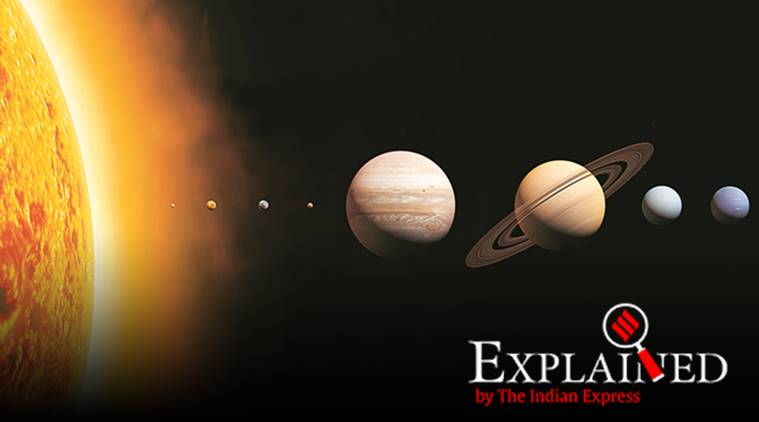Explained: How long is a day on each planet? Venus and Saturn still tease scientists
Explained: How long is a day on each planet? Venus and Saturn still tease scientists
Astronomers are still looking for an accurate assessment of the length of a day on Venus, while Saturn continues to deceive us. Two new studies underline how much there is still left to learn.

A gas giant, by definition, it has no solid surface features for scientists to track. For Jupiter, scientists figured out the rotation period by observing patterns in radio signals from there.
Centuries ago, the ancients divided the day into 24 equal parts, or hours. Today, we look at this from the other point of view: the Earth takes approximately 24 hours to rotate once. Among other planets, Mars spins once in a little under 25 Earth-hours, while Jupiter spins so fast that its day is less than 10 hours long.
It is a measure so central to our understanding of the planets that it might appear scientists would have got the rotation periods of the Solar System planets figured out by now. The fact is, they have not. Astronomers are still looking for an accurate assessment of the length of a day on Venus, while Saturn continues to deceive us. Two new studies underline how much there is still left to learn.
Venus: hide & seek
Venus is something of an oddball. Obscured by clouds, it does not present a readily visible surface feature, such as a crater, which could have been a reference point for measuring its rotation period. In 1963, when radar observations broke through the cloud cover, Venus revealed that it rotates in a direction opposite to that for most planets.
These observations showed the length of a Venusian day is 243 days or 5,832 hours. Subsequent measurements have, however, given inconsistent values, differing by about six minutes. In 1991, studies based on the Magellan spacecraft’s observations concluded that the correct rotation period is 243.0185 days, with an uncertainty of about 9 seconds.
Present uncertainties, researchers note in a study in the journal Icarus, correspond to a distance of about 13 miles on the surface. For lander missions, including one planned in the next decade, that distance is more than enough to miss a targeted landing site.
From Earth-based radar observations between 1988 and 2017, the researchers, led by John Chandler of the Harvard-Smithsonian Center for Astrophysics, measured the location of features on the Venusian surface at specific times. “Those feature locations allow us to solve for the longitude of the point on Venus that is closest to the Earth during each observation. Once you know the longitude change over time, that provides the rotation rate,” co-author Bruce Campbell, chair of the Smithsonian Institution’s Center for Earth and Planetary Studies, said by email.
The authors conclude the mean Venusian day is 243.0212 days, with the smallest uncertainty yet — just 00006 days. They expect further improvements over the next decade.
Saturn: seasonal tricks
A gas giant, by definition, it has no solid surface features for scientists to track. For Jupiter, scientists figured out the rotation period by observing patterns in radio signals from there.
Saturn has defied such attempts. It emits only low-frequency radio patterns that are blocked by Earth’s atmosphere. Only after Voyagers 1 and 2 sent home data, in 1980 and 1981, could scientists analyze patterns that suggested a day on Saturn is about 10:40 hours long. But just 23 years later, the Cassini spacecraft sent data that showed the period had changed by 6 minutes, about 1%— which should take hundreds of millions of years.
To find answers for Saturn, a new study led by Duane Pontius of Birmingham-Southern College, US, looked at Jupiter. A key difference is that unlike Jupiter, Saturn has a tilted axis and, therefore, seasons like Earth. Depending on the season, the northern and southern hemispheres receive different amounts of ultraviolet radiation from the Sun. This affects the plasma at the edge of Saturn’s atmosphere. In turn, this creates more or less drag at different altitudes, according to the model suggested in the study, published in the American Geophysical Union’s Journal of Geophysical Research: Space Physics.
“Left to itself, the upper atmosphere would move at the same speed as the lower atmosphere, but the drag makes the upper atmosphere take longer than the lower atmosphere to make a full rotation around the planet,” Pontius explained by email.
This suggests that the observed periods are not the rotation period of Saturn’s core. That remains unmeasured. “One of the conclusions of our work is that the rotation period cannot be determined from the radio signal,” Pontius said, in reply to a question. “As for when how and when the core period can be measured, I really don’t know! However, the physics of Saturn’s magnetosphere is now known to be governed by the rotation rate that governs of its upper atmosphere.”

No comments